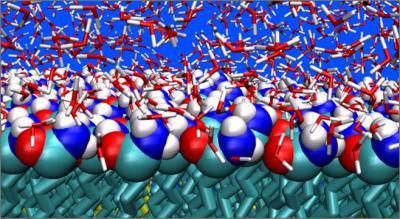Researchers at UCLA engineering discover theoretical model to predict jamming
The model could provide new avenues in materials innovation and medicine
Advertisement
Researchers at the UCLA Henry Samueli School of Engineering and Applied Science have come up with a theoretical model to predict when granular materials become jammed. This advancement not only broadens fundamental knowledge, it also provides new avenues to a number of practical areas that ranges from materials innovation to medicine. The study will be published in Nature Physics .
"We started this research by looking at the behavior of dry powders as solid lubricants as well as the behavior of a powdered rock in fault zones called gouge during an earthquake. What we found led us to a model that can accurately predict the behavior of dense granular flows. What we realized soon after was that the granular particles interact similarly to that of molecules in materials that jam, such as colloids and foam" said study's author Pirouz Kavehpour, an assistant professor of mechanical and aerospace engineering and director of the Complex Fluids & Interfacial Physics Laboratory at UCLA. "From there, we were able to find a universal law that can predict the jamming behavior for the first time."
According to Emily Brodsky, associate professor of earth and planetary sciences at UC Santa Cruz and also an author of the study, "We understand how water flows. We understand how honey flows. We even understand how elastic bands deform. But granular flows are complicated and hard to understand. If you're pouring sand down a hill or in an hour glass, there was never a good formula for the strain or the strain rate as a function of stress. This formula is definitely new and unique."
Kevin Lu, UCLA graduate student and lead author of the study, showed that the formula also quantified glass-transition. "Glass is a solid that flows. But structurally, it's a liquid. The molecules in a glass are jammed and unable to flow past each other so the material actually flows sluggishly. One evidence of this can be found in the window panes of old churches in Europe. Studies have shown that the bottom of the windows are consistently thicker than the top. Glassy liquids flow very much in the same manner as granular media." said Lu.
This new theoretical framework, the authors believe, can be applied to many different areas. Pharmaceutical companies can use the new equation to decide the size and quantities of pills that may or may not fit through a shoot that fills containers. Also, from knowing the fundamentals of jamming, scientists can now engineer materials that are both durable and strong. Instead of working with composites or alloys, the jamming theory provides a roadmap to tune material properties from pure substances.
Most read news
Topics
Organizations
Other news from the department science

Get the chemical industry in your inbox
By submitting this form you agree that LUMITOS AG will send you the newsletter(s) selected above by email. Your data will not be passed on to third parties. Your data will be stored and processed in accordance with our data protection regulations. LUMITOS may contact you by email for the purpose of advertising or market and opinion surveys. You can revoke your consent at any time without giving reasons to LUMITOS AG, Ernst-Augustin-Str. 2, 12489 Berlin, Germany or by e-mail at revoke@lumitos.com with effect for the future. In addition, each email contains a link to unsubscribe from the corresponding newsletter.































































